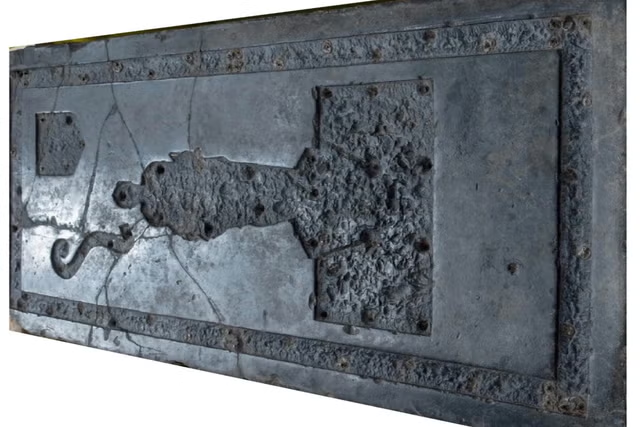Huge plumes of dust blown from the arid Sahara Desert towards the East Coast can better supercharge life in the oceans the further they travel.
The iron contained in the dust is a critical nutrient for phytoplankton in the oceans, but according to a new paper in the journal Frontiers in Marine Science, Saharan dust that is blown further across the Atlantic becomes more "bioreactive."
This increased bioreactivity means that it becomes more available for phytoplankton to take up and use in the processes of respiration and photosynthesis, sucking in CO2 from the atmosphere.
"Here we show that iron bound to dust from the Sahara blown westward over the Atlantic has properties that change with the distance traveled: the greater this distance, the more bioreactive the iron," study co-author Jeremy Owens, an associate professor at Florida State University, said in a statement.
"This relationship suggests that chemical processes in the atmosphere convert less bioreactive iron to more accessible forms."
In the paper, the researchers describe how they measured the levels of bioreactive iron across the Atlantic by taking drill cores from the seafloor. They compared the levels of total iron in the cores to their distance from the Sahara-Sahel Dust Corridor, which is a region between Mauritania and Chad where massive amounts of dust from the Sahara Desert are transported across the Sahel region and beyond.
The dust in this area is lifted into the atmosphere by winds and can be transported over thousands of miles. During certain times of the year, especially between late spring and early autumn, the dust clouds intensify and are often visible in satellite images.
The researchers' cores were collected 125 miles and 310 miles west of northwestern Mauritania, in the mid-Atlantic, and about 310 to the east of Florida. They measured the iron and other mineral content in the upper 200 to 650 feet of these cores, which represent deposits over the last 120,000 years. They discovered that much of the iron present was in other forms, including iron carbonate, goethite, hematite, magnetite and pyrite, which are thought to be formed from bioreactive iron on the seafloor.
"Rather than focusing on the total iron content as previous studies had done, we measured iron that can dissolve easily in the ocean, and which can be accessed by marine organisms for their metabolic pathways," said Owens.
"Only a fraction of total iron in sediment is bioavailable, but that fraction could change during transport of the iron away from its original source. We aimed to explore those relationships."
The researchers reveal in the paper that bioreactive iron was lower in the cores closer to America than in those closer to Africa, suggesting that more had been removed by organisms in the water and less had made it to the seafloor.
"Our results suggest that during long-distance atmospheric transport, the mineral properties of originally non-bioreactive dust-bound iron change, making it more bioreactive. This iron then gets taken up by phytoplankton, before it can reach the bottom," study co-author Timothy Lyons, a professor at the University of California at Riverside, said in the statement.
"We conclude that dust that reaches regions like the Amazonian basin and the Bahamas may contain iron that is particularly soluble and available to life, thanks to the great distance from North Africa, and thus a longer exposure to atmospheric chemical processes," said Lyons.
"The transported iron seems to be stimulating biological processes much in the same way that iron fertilization can impact life in the oceans and on continents. This study is a proof of concept confirming that iron-bound dust can have a major impact on life at vast distances from its source."
Do you have a tip on a science story that Newsweek should be covering? Do you have a question about Saharan dust? Let us know via science@newsweek.com.
References
Kenlee, B. et al. (2024) Long-range transport of dust enhances oceanic iron bioavailability. Frontiers in Marine Science, https://doi.org/10.3389/fmars.2024.1428621
Disclaimer: The copyright of this article belongs to the original author. Reposting this article is solely for the purpose of information dissemination and does not constitute any investment advice. If there is any infringement, please contact us immediately. We will make corrections or deletions as necessary. Thank you.



